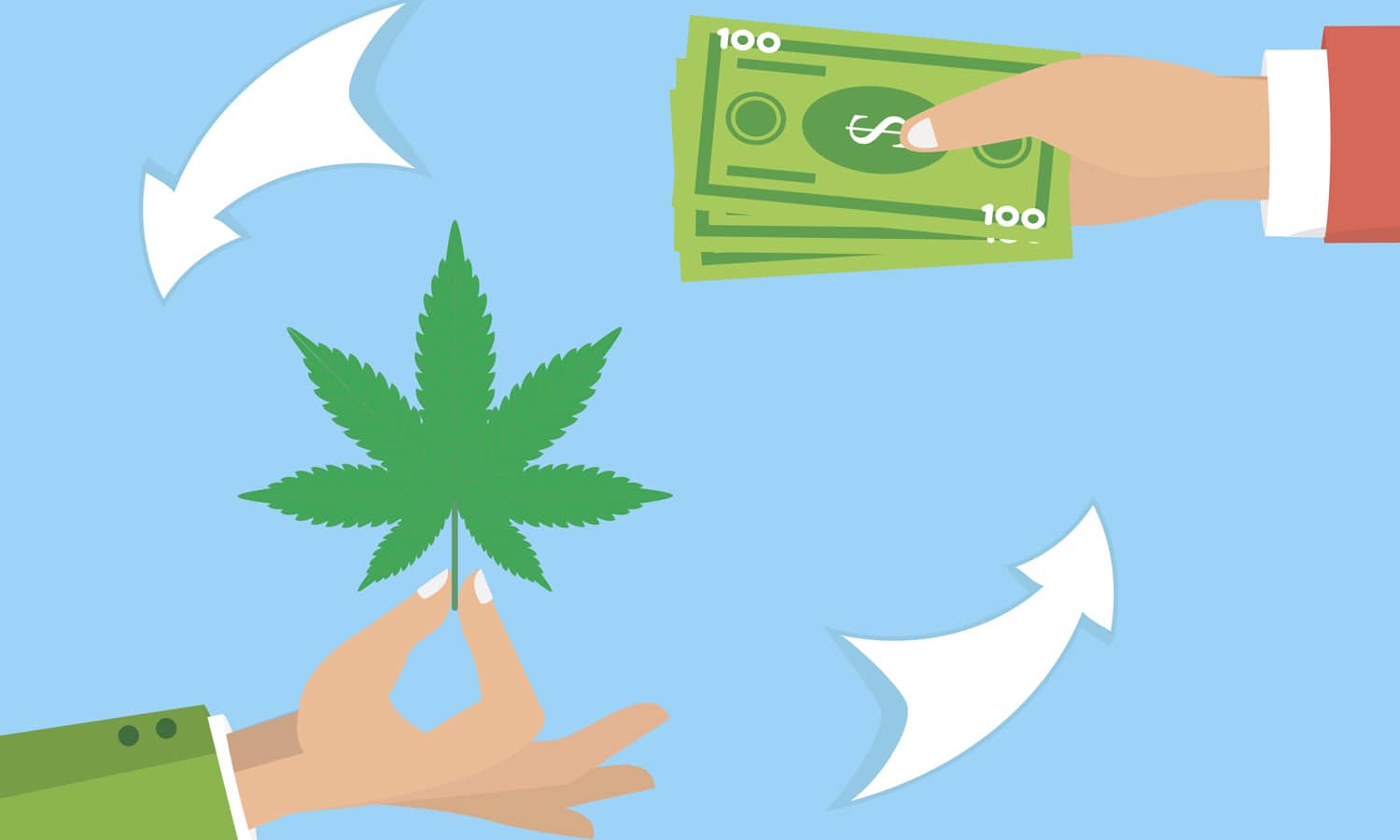Cannabis grown indoors is considered better quality and sells for 40% more than greenhouse cannabis, according to an agricultural economist.
While the black market is thriving in nearly every market where cannabis is sold — it was 60% of second quarter sales in Canada in 2019 — it appears to be particularly troublesome in California, where a lack of enforcement, a lack of oversight, and regulatory burdens on legal businesses has allowed it to grow.
A report by cannabis research firm BDS Analytics found that California’s illicit market is predicted to comprise 53% of all sales in 2024; the black market in other states with more supportive regulatory regimes are expected to shrink to 30% or less of total sales in that time frame, according to the report.
Black market enterprises are not always the guy in a parking lot or dorm room selling weed in a state where it has been legalized. An audit from the United Cannabis Business Association, a California retail cannabis advocacy association, found that, of the 3,757 dispensaries or delivery services listed on the popular cannabis service platform Weedmaps, only 922 were licensed to legally sell weed.
California now has a bill that would fine each of these illegal businesses $30,000 a day — AB 97 effective as of July 1, 2019 — but enforcement is still lagging.
The vaping crisis has played an important role in the fight to identify and stop the black market in California, as many dangerous vaping products were sold there and in other states. California stepped up enforcement and busted 24 unlicensed locations last December.
RELATED: Does Overregulation Drive Black Market Marijuana?
Then in February, the state’s Bureau of Cannabis Control proposed emergency regulations that included adding a “quick response code” to the packaging of all legal cannabis products to help consumers identify licensed cannabis retail stores, thus supporting the legal cannabis market. A consumer could scan the code into his or her smart phone to confirm that it’s legitimate.
While new regulations are helpful, it’s been the regulatory structure in part (along with high taxes on retail products) that has caused the black market to thrive in California.

A quick look at 138-page list of regulations from the California Bureau of Cannabis Control shows how daunting it can be to be perfectly compliant: application fees, licensing fees, video surveillance details, track and trace system requirements, delivery requirements, and on and on.
Others cities and states are also reeling from the cannabis tax burden. For example, recreational buyers in Chicago will pay over 41% in taxes for their legal product.
Then there’s the cannabis legacy of the state. Being an illegal cannabis grower/seller in California is just, well, sort of a natural thing. The state is the home to third generation cultivators who have been growing some of the world’s best cannabis, and living an illegal cannabis lifestyle has been happening since the 1960s.
RELATED: Canadian Retailers Will Sell ‘Value Brand’ Marijuana To Overcome Black Market Dominance
One cannabis connoisseur living in Humboldt County in the 1970s told The Fresh Toast about growers assembling each year in an unofficial “smoke off” competition. Here, they compared strains of cannabis they were growing in what is called the Emerald Triangle — the region in northern California known as the largest cannabis-producing area in the country.
Growers here are used to a sort of renegade lifestyle, growing indoors for the most part to hide the illegal crop they were growing. Now they are being asked to come out into the limelight, share their knowledge, and pay fees and taxes to the very institutions they have dodged and snubbed for 50 years or more. It’s a tough transition, but it is beginning.
Organizations such as the International Cannabis Farmers Association are helping farmers in the Emerald Triangle area work toward a more artisanal product, and address the barriers to compliance.
There is an unexpected silver lining gleaned from illegal growers.

The black market method of growing indoors has been shown to have real value over growing outdoors, because there are more light, nutrient and ventilation controls. This leads to more controlled and repeatable experimentation with cultivars, which can meet an increasing demand for variety, according to agricultural economist James Eaves during a presentation at Cannabis Sciences 2020.
Cannabis grown indoors is considered better quality and sells for 40% more than greenhouse cannabis, according to Eaves.
So there is that to consider.
All indications are that the cannabis black market will continue to thrive, and the peak of its influence is still a few years away. How it will continue to affect the huge worldwide cannabis market — expected to be $42.7 billion worldwide by 2024, according to a recent BDS analytics repor — is anybody’s guess.
As more product is sold, and tax structures become more in line with other consumer products — because of industry feedback and advocacy — and enforcement gains a better foothold, the hope is that the black market should jus fade away.


